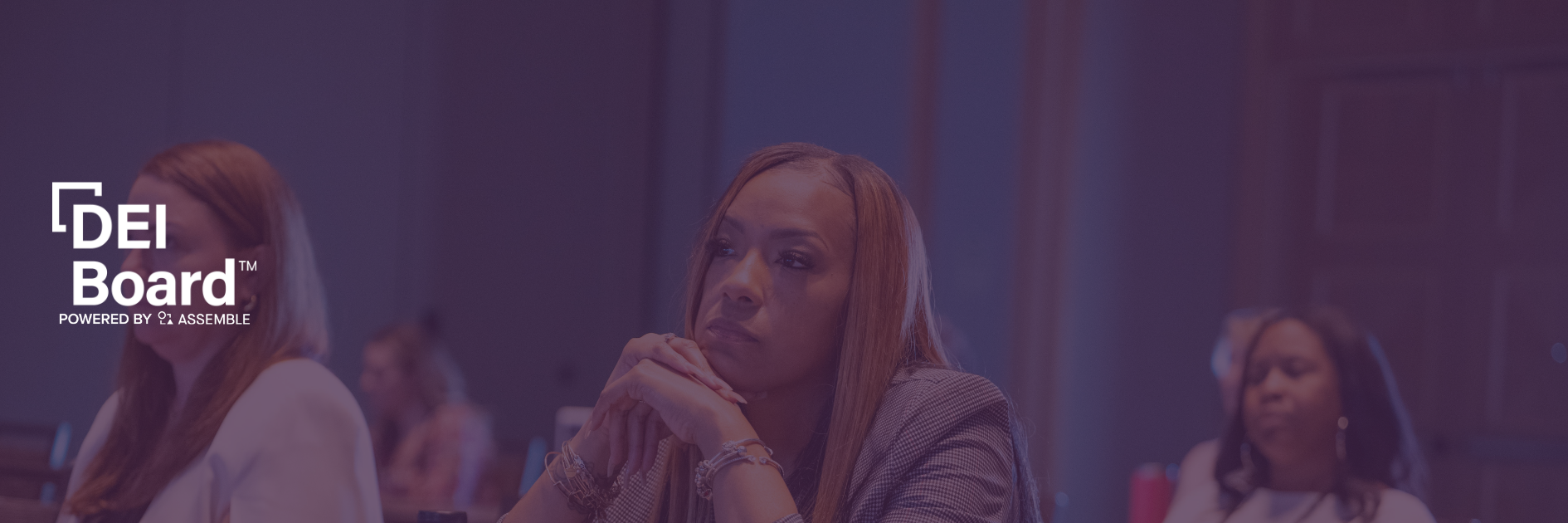Key takeaways:
- Go beyond talent data. Align DEI with business transformation, change management, and customer experience.
- Use ERG metrics strategically to track engagement quality, not just event participation or headcount.
- Demonstrate business risk and lost opportunity when DEI isn’t part of growth, retention, or culture strategies.
As DEI leaders face increasing pressure to prove value in a volatile political and legal environment, the conversation is shifting. Metrics that once centered on representation and recruitment are being reimagined to reflect broader business impact by connecting culture, change, and customer experience to enterprise performance.
In a recent confidential discussion among DEI Board members, leaders from global brands shared how they’re evolving their metrics, demonstrating how DEI is central to employee experience and business growth and resilience.
Expand Your Metrics Beyond Talent to Show Real Business Impact
While representation and retention are still critical, many DEI leaders are reframing their value by linking inclusion to business readiness and cultural agility. One DEI Board member emphasized using employee experience data, like belonging and team enablement scores, as early indicators of how well the organization can manage large-scale change (e.g., AI adoption).
By tracking how inclusion influences collaboration, psychological safety, and adaptability, DEI leaders are showing their role in driving transformation readiness, especially during fast-paced shifts in strategy.
“You need that undercurrent of psych safety, trust, and respect to drive cultural change management,” one member explained. “DEI data is either a leading or lagging indicator of whether we’ll succeed.”
Use Retention, Belonging, and Engagement Data to Quantify Business Value
DEI work often influences outcomes like productivity, absenteeism, and tenure, especially among frontline and underrepresented employees. Members shared data showing that even small increases in belonging can translate into millions in savings.
For example, one company calculated that a 1% improvement in retention equaled $8 million annually in cost savings. Another referenced a BetterUp study showing 75% fewer sick days and higher productivity when employees feel a sense of belonging.
These numbers make a compelling case to operational leaders and budget holders who care about turnover, absenteeism, and training costs. Framing DEI as a driver of operational efficiency, not just equity, can shift perceptions and unlock support.
Elevate ERG Measurement to Track Quality, Not Just Quantity
Many DEI teams are evolving how they evaluate ERG performance. While tracking event attendance and membership is still common, more leaders are experimenting with deeper engagement metrics, like internal communication participation rates, member surveys, and conversion to development pipelines.
One leader shared how they calculate an “ERG engagement score” based on participation ratios to surface where real connections and value are happening. Others are using surveys to isolate their ERG’s impact on belonging, independent of broader employee sentiment trends.
Another tactic: connecting ERG activity to business-facing outcomes, like recruiting events that result in hires or partnerships that drive product development. These stories help validate ERGs as strategic business assets, not just community groups.
Tie DEI to Strategic Growth Pillars to Future-Proof Your Work
DEI Board members are seeing traction when they link DEI to business priorities like client relationships, AI upskilling, and inclusive product innovation. One member added more to drive this point home.
“What would happen if we didn’t exist? What would happen if our department wasn’t here? As sad as it is, just existing is still a value driver,” that member noted.
The answer often reveals hidden dependencies, like equitable access to development, informed client engagement on social issues, or readiness for global inclusion challenges. By framing DEI as a competitive advantage and a risk mitigator, leaders are reinforcing its place in strategic planning conversations.
Make DEI a Business Priority with Your Peers
Whether you’re tracking culture, scaling inclusive leadership, or proving impact through retention and engagement, one thing is clear: DEI success is no longer just about doing the work. It’s about measuring it in ways that speak to the business and protecting that progress in a shifting landscape.
If you’re leading DEI at a large company and want to stay ahead of what works, apply to join the DEI Board. Our members connect in a candid, confidential environment to benchmark their strategies, navigate top challenges, and review what real impact looks like.


